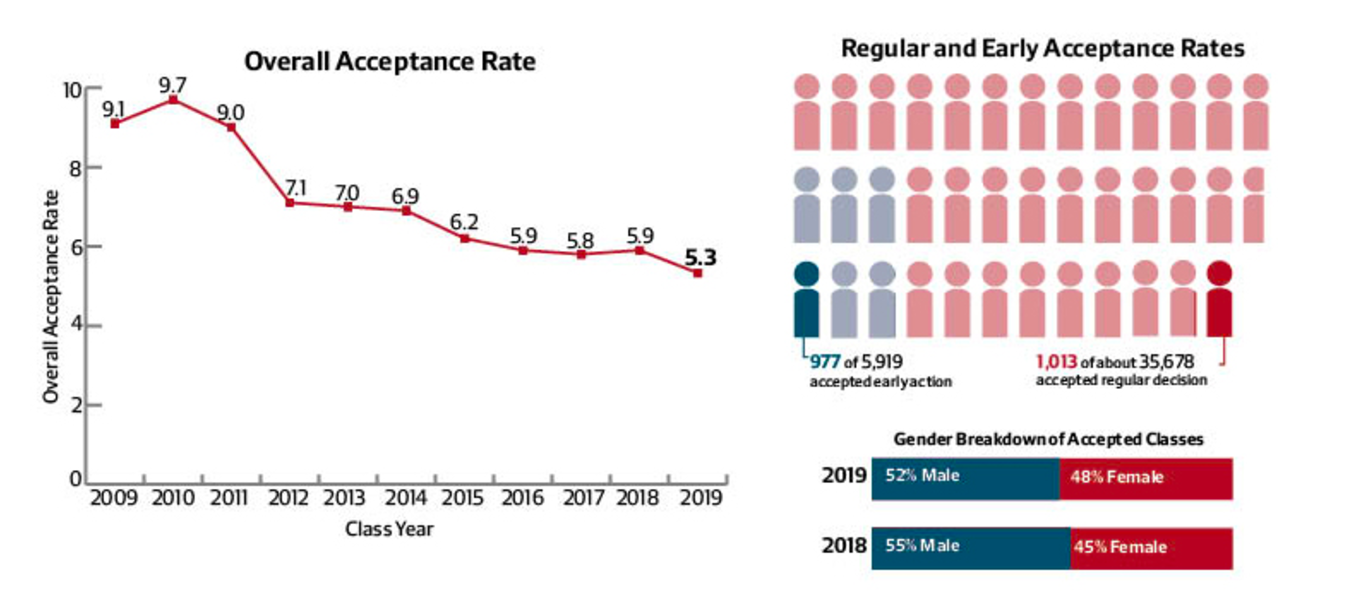Admissions Trends
College admissions is a rapidly changing landscape. Every year, universities make changes to their requirements, more students apply, and the process becomes more complicated. However, college is a gateway to tremendous personal and professional growth and it is an important time. Having been involved in college admissions since 2009, I wanted to share some trends I have seen; accompanied by some predictions for the coming trends of next admissions cycle.
We at Empowerly have helped thousands of students in California and across the world through the college admissions process. This scope further adds to our ability to see how students are affected by changes in the admissions process.
Trend 1: Top 10 schools will have admissions rates fall even faster than last year
Looking at the trend at the Top 20 schools over the past 20 years, college acceptance rates have dropped tremendously. I predict that this will trend will continue at the Top 10 schools at an accelerating pace, at the Top 100 schools at the same pace, and at the rest of the approximately 4,000 universities in the United States at a slower pace.

Looking across the United States, the average acceptance rate to college is about 66%. Colleges want students and need to increase their enrollment. The problem is that students want to attend the top 100 colleges far more than other colleges. Because these colleges are often located in environments where expansion is hard (for example, Columbia in the New York City), expansion is tough. Further, this trend of dropping acceptance rates helps the university brand.
In order to counteract this mega-trend for the next admissions cycle, I recommend students who are aiming for Top 50 schools, which includes most of the UC schools, all Ivy Leagues, and schools like Emory, Georgetown, Stanford, MIT, and others, to apply to more schools.
The Common Application accepts up to 20 schools, and for many students, I believe hitting this maximum is not a problem. It is more work, but admissions is an important process that is the cumulation of many years of effort from students and parents.
Again, this is advice for students with A’s and B’s who are hoping to get into a Top 50 school. At Empowerly, we help these types of students every year in the Bay Area and all over the world. Because we work online with students, we have helped many students in Los Angeles, New York, Texas, India, China, and elsewhere.
Trend 2: Early Action and Early Decision will become even more important
You can apply to college in the United States at many points in time. The major types of deadlines are rolling, early action, restrictive early action, early decision I, early decision II, and regular decision. I will describe each, but the major trend occurring is that top colleges are accepting more and more of their students earlier in the admissions process.
I believe all students aiming for a Top 50 school (students with A’s and B’s) should be applying early action or early decision to at least one school. This has many benefits if we gain acceptance: we can cut down our list of other schools; it gives us peace of mind; and it generally increases our chances given the right circumstances.
Corollary information:
How early is early? The earliest deadlines are rolling where students can submit their applications as soon as the portal opens. This trend is especially popular for schools that are ranked lower and for graduate programs. For early action and early decision I schools, the deadline is November 1 generally. Regular decision is generally around January 1.
At many top 50 schools, over 50% of the class is filled up in the early rounds. This figure is rising. Colleges can predict if students attend if they must attend after accepting. Colleges can calculate how much tuition they will generate and increase their yield rates, the percentage of students who accept an offer if given. If students are required to accept, as they have to in the early decision process, the yield rate for those students is 100%. So theoretically, if a college accepts all students in the early decision process, their yield rate would be 100%.
The colleges with the highest yield rates generally are the most prestigious or sought after – Harvard and Stanford have yields in the mid 80s right now. US News and several other ranking services use yield to rank colleges. These rankings are very important to colleges, and therefore, they focus on yield. Make sure you apply somewhere early.
These two trends will continue in this admissions cycle because they are drawn by a variety of factors – more students applying, yield rates, college rankings, and the influx of international students.
Closing notes
At Empowerly, we start with students and parents as early as 7th grade. We focus on educating them on the ever-changing process to help them get prepared. The best thing you can do is read as much as you can about the nuances and evolution of admissions trends in your context. Feel free to book a consultation to talk to one of our team members below.
